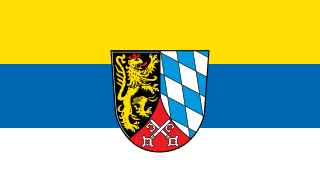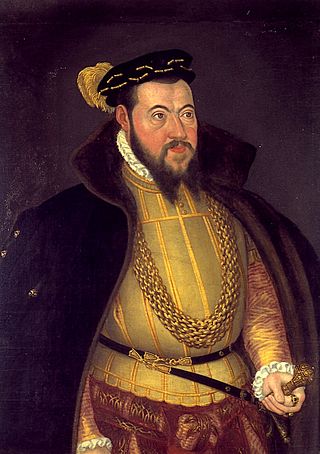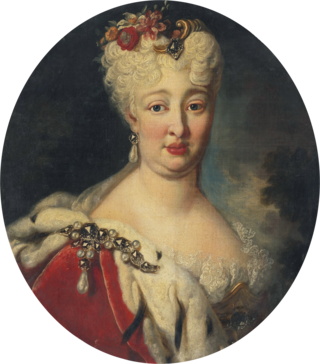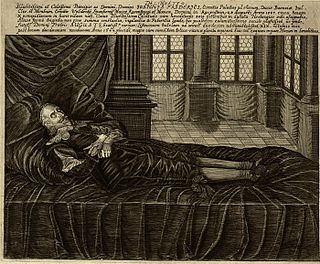
The Upper Palatinate is one of the seven administrative districts of Bavaria, Germany, and is located in the east of Bavaria.
Pfalz, Pfälzer, or Pfälzisch are German words referring to Palatinate.

Charles III Philip was Elector Palatine, Count of Palatinate-Neuburg, and Duke of Jülich and Berg from 1716 to 1742. Until 1728 he was also Count of Megen.
John Frederick may refer to:

Louis I, called the Kelheimer or of Kelheim, since he was born and died at Kelheim, was the Duke of Bavaria from 1183 and Count Palatine of the Rhine from 1214. He was a son of Otto I and his wife Agnes of Loon. Louis was married to Ludmilla, a daughter of Duke Frederick of Bohemia.
Palatinate or county palatine may refer to:

Count Palatine Wolfgang of Zweibrücken was member of the Wittelsbach family of the Counts Palatine and Duke of Zweibrücken from 1532. With the support of his regent, his uncle Rupert, Wolfgang introduced the Reformation to Zweibrücken as early as 1537.

Palatinate-Neuburg was a territory of the Holy Roman Empire, founded in 1505 by a branch of the House of Wittelsbach. Its capital was Neuburg an der Donau. Its area was about 2,750 km², with a population of some 100,000.
Sulzbach or Sülzbach may refer to:

Countess Palatine Maria Francisca of Sulzbach, was a Countess Palatine of Zweibrücken-Birkenfeld by marriage to Frederick Michael, Count Palatine of Zweibrücken-Birkenfeld.

Elisabeth Auguste of Neuburg was the only surviving child of Charles III Philip, Elector Palatine. The Palatinate-Neuburg line became extinct with her father and was succeeded by the Palatinate-Sulzbach line. Her sons with Count Palatine Joseph Charles of Sulzbach would have been the indisputable heirs to the Electorate of the Palatinate, but they all died in infancy. She was the Hereditary Princess of Sulzbach by marriage.

Philipp Ludwig of Neuburg was the Duke of Palatinate-Neuburg from 1569 until 1614.

Joseph Charles, Hereditary Prince of Sulzbach was the eldest son of Theodore Eustace, Count Palatine of Sulzbach.
Palatinate-Sulzbach was the name of two separate states of the Holy Roman Empire located in modern Amberg-Sulzbach, Bavaria, Germany, ruled by a branch of the House of Wittelsbach.

Otto Henry of Sulzbach was the Count Palatine of Sulzbach from 1569 until 1604.

Augustus was Count Palatine of Sulzbach from 1614 until 1632.

Johann Friedrich was the Count Palatine of Sulzbach-Hilpoltstein from 1614 until 1644.
The district duchy, also known as the district principality, was a type of the state under the patrimonial system, such as duchy or principality, formed in the feudal system, as a result of land partition between the members of a royal family. It occurred in the Middle Ages and early modern period, notably in Europe, in states such as the Holy Roman Empire, Duchy of Poland, and Kievan Rus'.

Maria Henriette de La Tour d'Auvergne was a noblewoman born into the House of La Tour d'Auvergne. She was the suo jure Margravine of Bergen op Zoom from 1710 at the death of her father. She was the mother of Charles Theodore, Elector of Bavaria.

Anna of Cleves was a daughter of Duke William V of Jülich-Berg and his wife, Maria of Austria.